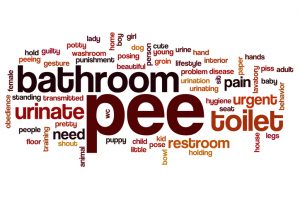
Signs and symptoms of mixed incontinence
As mentioned, mixed incontinence is a combination of urge and stress incontinence symptoms. Usually, one type is more pronounced than the other, so you may experience more symptoms of one type of incontinence than the other.
Signs and symptoms of mixed incontinence include:
- Urine leakage when coughing, sneezing, or laughing
- Urine leakage after a sudden urge to urinate, during sleep, or after drinking even a small amount of water
Causes of mixed incontinence
Causes of mixed incontinence are a combination of causes for urge and stress incontinence. Stress incontinence is often caused by childbirth, pregnancy, sneezing, coughing, or other factors that compromise the strength of the bladder muscles.
Urge incontinence is caused by the involuntary actions of the bladder muscles, resulting from nerve damage or damage to the bladder muscles. Urge incontinence is often tied to other conditions, too, including Parkinson’s disease, multiple sclerosis, diabetes, stroke, and thyroid problems.
Mixed incontinence diagnosis
In order to properly diagnose mixed incontinence your doctors will review your symptoms and conduct a physical examination in order to determine any nerve damage.
There are several tests your doctor can perform in order to diagnose the exact underlying cause of your mixed incontinence. These tests include:
- Cystoscopy, which looks into your bladder, pad test where you wear a pad to determine how much urine you lost
- Ultrasound, measurement of urine after urination
- Urinalysis
- Urinary stress test
- Urine cytology
- Urodynamic studies to measure pressure and urine flow
- X-rays
- Completing a voiding diary to track fluid intake, urine output, and urination frequency
- Catheterization which involves inserting a catheter into an empty bladder and see if additional urine is released. Results of this reveal whether or not the bladder is emptying fully
Treatment options for mixed incontinence
The main goal of treating incontinence is to resolve the underlying problem. This may consist of antibiotics and other medications and therapies, if applicable.
There are four main treatment approaches: bladder and pelvic floor exercises, lifestyle changes, medication, and surgery.
Exercise part of the treatment involves performing Kegels and retraining your bladder by following a schedule for urination. For best results, avoid going in-between the scheduled times.
Lifestyle changes include drinking water, drinking in smaller amounts, not drinking prior to bed, avoiding carbonated beverages, avoiding caffeine, spicy foods, acidic foods, and artificial sweeteners, and avoiding activities that stress the bladder.
Medications can be prescribed to help relax bladder muscles and prevent bladder muscle spasms.
Lastly, surgery is only used in severe cases of urge incontinence, connecting the bladder to the bowels for increased fluid retention.
Here are some tips to keep your bladder healthy:
- Never hold in your urine for too long – it can damage the nerves that send a response to your brain, instructing you when to go.
- Stay hydrated to help your body expel the toxins and bacteria to avoid any future UTIs.
- Perform Kegel exercises. This involves squeezing and relaxing the pelvic floor muscles to maintain bladder control.
- Quit smoking as it irritates the bladder.
By following these bladder-friendly tips, you can ensure your bladder stays healthy for many more years to come.